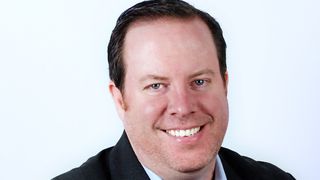Ask A Buyer: Publicis’ Dave Penski Answers B&C’s Upfront Questions

As the upfront markets approach, the media landscape has never been more complex.
There are many questions surrounding both the long-term future of the television business and the short-term decisions advertisers will make. Answers at this time of the year can be in short supply.
B&C has arranged to get some questions answered by one of the most knowledgeable and well-regarded people on the buying side of the negotiating table, Dave Penski, CEO of Publicis Media Exchange, among the largest spenders of the giant media agencies.
In this installment, Penski fields questions from B&C business editor Jon Lafayette. Email him at jlafayette@nbmedia.com if you’ve got questions you’d like Penski to answer in the coming weeks.
With ad dollars moving to digital, are the TV upfronts still a big deal to buyers and advertisers?
Absolutely. I don’t think that’s changed. Obviously you look at the market in a much more holistic fashion than we have in the past, but this is still a very big deal. Regardless of the importance of the TV upfronts, it’s a time that we have used a long time for thinking about next year, about planning ahead. I think it’s a good time to take a moment to think about the future, and that’s still is a really positive thing. Even if the dollars aren’t all going where they used to, the conversation still happens, and it is a great planning, strategy kind of pause to let you do that. Sometimes I think one of the things that’s missing from today’s media landscape is taking those pauses and taking those sometimes longer points of view versus a quarterly by quarterly, which often we think about today.
Viacom, Turner and Fox released more details about their OpenAP consortium, which is trying to standardize audience buying and provide third-party reporting. Do you want the networks getting together on a standard and will Publicis employ OpenAP during the upfront?
Broadcasting & Cable Newsletter
The smarter way to stay on top of broadcasting and cable industry. Sign up below
Right now, it’s used for planning, it isn’t used for buying, so I’m probably not the best person to talk about this. But I think that the importance of this is getting around a single metric. I don’t know if this is the be-all and end-all solution to it, but I look at it as a very positive step in the right direction. Unfortunately, you still have to transact with each of them in the way you would today, so it’s not like there’s an automated buying process. And obviously NBC has their own system, and I still think we’re a ways away from having a single metric, but certainly the fact that three of the large networks are doing this is great, and let’s take this as a first small step in the right direction.
What was the best upfront event you ever attended?
I think it’s almost easier for me to do the opposite question. I was trying to think of whatever the shortest one was, but I actually think the best upfront I ever attended was ABC with Jimmy Kimmel, and they showed the pilot from Modern Family. So that was probably the best on I ever attended.
Was it because the show was so strong?
I remember Jimmy Kimmel making us laugh, which he’s done for a number of years. I think it’s a moment of levity in sometimes a very serious week, and I thought that the showing of a single pilot was great, that the content was great, and really gave you a lot of hope for that show, which obviously turned out well. I think the only other time I remember seeing that was NBC showed Joey one time, many years ago. They had a lot of hope for that, but it didn’t pan out. But the fact is that that show panned out and there’s was lot of heart there. So I think that was really positive, and I think that was really enjoyable, and I didn’t feel like I was there for two or three hours.
Jon has been business editor of Broadcasting+Cable since 2010. He focuses on revenue-generating activities, including advertising and distribution, as well as executive intrigue and merger and acquisition activity. Just about any story is fair game, if a dollar sign can make its way into the article. Before B+C, Jon covered the industry for TVWeek, Cable World, Electronic Media, Advertising Age and The New York Post. A native New Yorker, Jon is hiding in plain sight in the suburbs of Chicago.

